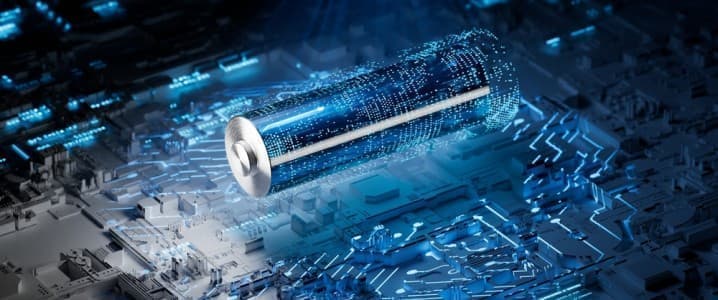Copyright OilPrice

There’s an exciting new development in the global race to discover next-gen battery tech. Iron-air batteries are finally ready to be tested in real-world applications, with major disruptive potential for the energy storage sector. These batteries use rust to create electricity and have the potential to deliver long-term energy storage at a time when such a breakthrough is desperately needed. Iron-air batteries function by running air through a negatively charged cathode toward a positively charged iron anode to react with a water-based electrolyte. During this passage, ions attach to the iron anode to form rust. As the ions pass through this rust layer, they produce electricity. Et voila! A battery. Critically, after this process is complete, the rusting can be reversed and the battery can be “reset” to do it all over again. This could have enormous implications for battery technology and energy storage, as an iron-air battery is “built from safe, low-cost, abundant materials—iron, water, and air—and uses no heavy or rare-earth metals,” as summated by the Good News Network. As expressed by Yet-Ming Chiang, co-founder and Chief Scientist of Form Energy, a frontrunner in the development of commercial iron-air batteries: “Air is still free and iron is one of the most widely produced, lowest cost materials in the world.” This gives iron-air batteries a major leg up on the dominant technology in the battery sector – lithium-ion batteries. Lithium is an incredibly useful material for battery-making, as it is extremely energy-dense and high-performing, even in cold temperatures. But lithium also has major downsides, including geopolitically tricky supply chains, negative environmental impacts associated with its extraction, and the relatively short length of time it can store energy. It is this last point that may prove the most critical. As the world increasingly transitions away from fossil fuels and toward more renewably powered grids, long-term energy storage will be absolutely critical to maintaining energy security. Wind and solar power are variable, meaning that their energy production fluctuates throughout the day and across seasons. Matching power demand to power supply will therefore require the large-scale ability to capture excess energy at peak production and feed it back into the grid as needed. At present, lithium-ion batteries dominate energy storage systems, but they can only hold energy for a matter of hours. By comparison, iron-air batteries are being referred to as “100-hour batteries” for what is already recognized as their biggest and most exciting selling point. A breakthrough in commercially viable long-term energy storage would not only disrupt the storage sector, it would transform and critically catalyze the decarbonization movement, making 100% renewable grids a safe and reliable possibility in the near future. Accordingly, energy storage is heating up to be “clean energy’s next trillion-dollar business,” and the race to find the first commercial long-term storage solution is fierce. Iron-air batteries are still nascent, so it's hard to say that they will be the breakout long-term storage model that changes everything. But so far, it seems they could be a major contender. Earlier this year, Dutch startup Ore Energy completed the world’s first iron-air storage system with grid connectivity. While the project is just pilot scale for now, representatives at Ore Energy think it’s going to scale up in a hurry, and they are confident that their successes are just beginning. “We are really busy talking with a lot of commercial parties about deploying our systems,” Bas Kil, business development lead for Ore Energy, recently told Latitude Media. “So that is for us really the next time. We’re not planning to do years and years of pilot-scale [projects]; we believe that our system is now ready for commercial deployment.” By Charles Kennedy for Oilprice.com More Top Reads From Oilprice.com Copper Soars to Record High on Supply Crunch and Brighter Outlook India Plans $11.3 Billion Bailout for State Power Firms Japan Tells Trump Tokyo Will Struggle to Ban Russian LNG Imports



